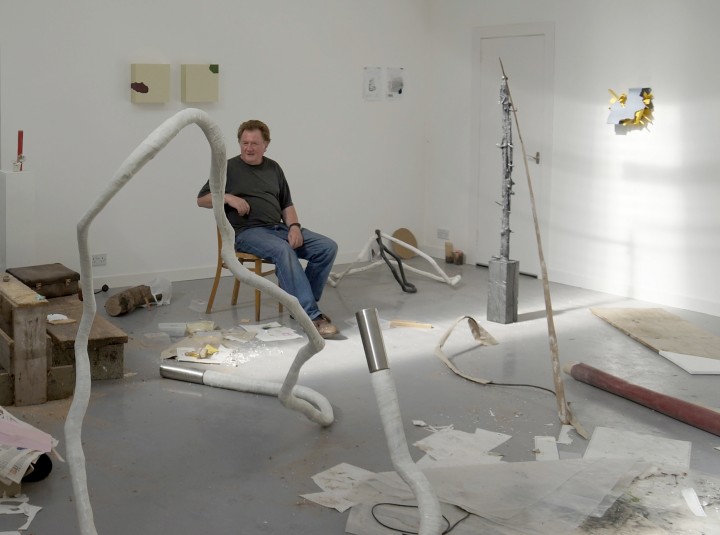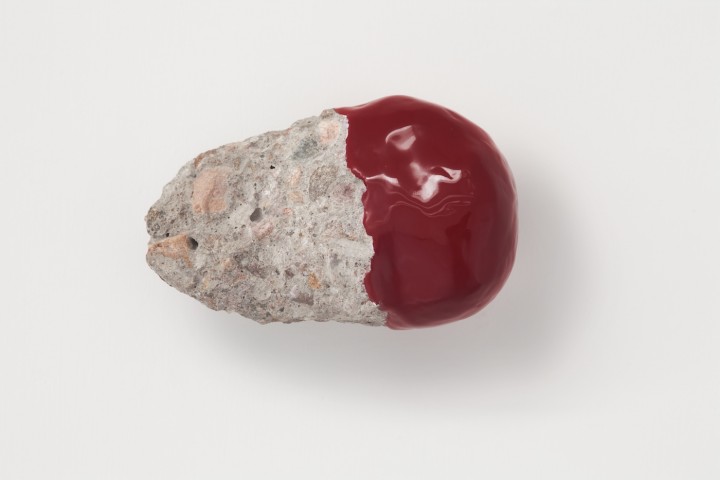Scottish Art News
Latest news
Magazine
News & Press
Publications
Ian Kane (1951-2021)
By Andrew Patrizio, 01.02.2022

The Scottish art world was saddened by the recent death of Ian Kane, artist and inspirational teacher who, aged 70, was producing some of the best art of his career. I first met him in 1986 when he featured in Signs of the Times at the Talbot Rice Gallery (at the same venue four years later he was part of a remarkable three-person show with Matthew Inglis and Gordon Brennan). He was lively, engaged, warm and curious (no wonder he was a brilliant teacher).
In his art, Kane managed to unite a deep interest in the international artworld with a playful spirituality. He was one of 24 sculptors who featured in my book Contemporary Sculpture in Scotland (1999). My last email exchange was in September, as he guided me around his recent sculptural activities. Rereading the exchange, there is a suitably paradoxical contrast between the unhurried pace of our unfolding conversation and the simultaneous sense that he was racing to catch the plethora of ideas for new work in his head.
Kane was an East Highland man through and through, though he made some decisive moves south. He studied sculpture at Edinburgh College of Art (from 1975 to 1980) before taking up the Scottish Arts Council’s Amsterdam studio residency, from which followed shows across the Netherlands and Belgium, expanding soon after to exhibitions across Europe, Canada and Japan.
 Ian Kane, Seeing is Believing.
Ian Kane, Seeing is Believing.
Kane integrated teaching and making. Afterall, as he wrote: ‘The making of every piece is a re-learning’, and he passed this sense of curiosity to his students at the University of the Highlands and Islands, firstly at Inverness College and then at Moray School of Art, from where he had recently retired. His paired interests of internationalism and localism meant he was a highly influential figure in the lives of many graduates. (Read the beautiful obituary by close friend and colleague Dr Gina Wall.)
In Dalcross, near Inverness, he created a home, with wife June, a studio and a unique garden inspired by Zen (horti)culture. Like one of his writer heroes, Neil Gunn, he conjured up eastern presentness through visual art.
Kane's work had playfulness, weight, and a conceptual elegance. Archaeology, deep time, fossils and waste are re-purposed into enlightening reflections on the present. Many of his works were developed in serial form, assembled (either firmly or loosely) in a way that gave a sense of tumbling through time, yet briefly poised in the present.
Last year’s Timepiece, (Inverness’s Circus Artspace) represented a huge amount of recent work. It was his first show in his home community; a homecoming. Its themes mix ecology, environmental, time, highland history with Highland kensho (zen) – ‘classic Scottish light and dark’ as he told me. His last exhibition was with son Jamie, an artist based in Rotterdam, in a former chapel connected to Inverness’s Eden Court. In 1999, I wrote that Ian created forms 'for which a use has yet to be invented.' I think the true significance of his work will become greater as the years pass.
Andrew Patrizio is Professor of Scottish Visual Culture, University of Edinburgh. For more information on Ian Kane visit his website.




